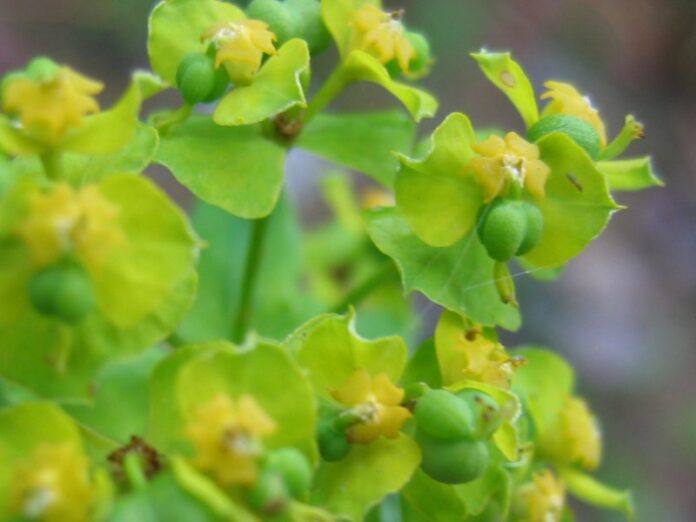
By Blaine Bug Crew
This week’s noxious weed spotlight falls on leafy spurge. Although this weed does not have a strong presence in Blaine County yet, it is a constant problem one county to the west, in Camas.
This plant contains a “milk” in its stem much like milkweed. Be sure not to get this substance in your eyes because it will cause eye damage. Blaine County residents need to be able to recognize this plant so it can be eradicated quickly before it can get a foothold in our county.
Leafy spurge is a deep-rooted, aggressive, persistent perennial that reproduces vegetatively and by seed. Plants have an extensive root system, which grows horizontally and is capable of reaching depths up to 20 feet. Stems are thick clustered and have narrow, alternate leaves which exude a milky latex when damaged. The flowers are small and yellowish-green and are enclosed in showy yellow-green bracts. Seeds are oblong and occur in clusters of three. When the seeds are dry, the capsules shatter and spread the seeds as far as 15 feet from the plant. Leafy spurge is commonly found in grassland and rangeland habitats, but is also capable of invading forest and riparian areas, displacing native vegetation. Leafy spurge has an insect predator.
Adult Oberea erythrocephala have red heads, black eyes, and slender bodies with antennae that are nearly as long as the body. Males emerge several days before females and both sexes are sexually immature for two weeks before they start mating. Females often gridle the upper part of the stem, gnaw a hole into the stem above the girdle, and deposit an egg into the hole. From the end of June to mid-July, each female can produce approximately 60 eggs during her lifetime. Larvae hatch 10 days after eggs are laid and feed in leafy spurge stems on the pith, tunneling downward to the root crown where they remain during the winter. Mined stems dry, wilt and do not produce flowers or seeds. Crown and root feeding reduces the plant’s root reserves and allows pathogenic fungi to enter infested leafy spurge roots. OBER prefers moist areas with trees and can survive subfreezing winter temperatures. Some research suggests that this agent may be biotype-specific—only attacking certain biotypes of leafy spurge.
Vigilance is the key to controlling any noxious weed. If you happen upon an infestation of this weed on your property, pull it immediately. If it is public land, be sure to call Morgan Baird at the Blaine County Weed Department at (208) 788-5543.


